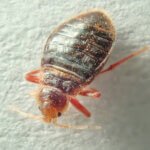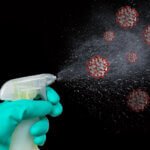Aspergillus niger (also known as black mould) is a fungus of the genus Aspergillus.
It is a causative agent for a number of rot diseases in fruits and vegetables such as grapes, apricots, onions, garlic, peanuts, and more. In rare cases, Aspergillus niger is reported to be a cause of lung infections (pneumonia) among humans.
Aspergillus niger is ubiquitous in soil, decaying vegetation, and indoor environments.
Overview of Aspergillus niger
Besides post-harvest food decay and human infections, Aspergillus niger species are crucial factors in the diminishing aesthetic value of indoor building materials. This fungus mainly colonizes the wooden surface materials and other damp sites like water leaking from roofs and walls, resulting in degradation of materials and thus reduced life span.
Also, Aspergillus niger rapidly grows and subsequently deteriorates plastic coatings used in artificial water structure settings such as water parks, pools, water storage tanks, etc.
Also Read: Top Facts about MRSA
8 Interesting Aspergillus niger Facts You May Not Know
- Aspergillus niger was first characterized in 1729 by the Italian priest and biologist Pier Antonio Micheli.
- The name Aspergillus is derived from the Latin word aspergillum (an instrument or rod for sprinkling holy water).
- When viewed under a microscope, Aspergillus gave a resemblance of aspergillum.
- Aspergillus niger species are recognized as GRAS (generally recognized as safe) by FDA – US Food and Drug Administration.
- Aspergillus niger holds great importance in the field of biotechnology. It is primarily used for the commercial synthesis of citric acid.
- Aspergillus niger is a haploid filamentous fungus due to which it is used in waste management and biotransformations.
- Research studies have identified a new gene encoding protein EstA from Aspergillus niger. Protein EstA is a member of fungal esterases within the α/β hydrolase fold superfamily of proteins.
- Aspergillus species cause a number of pulmonary problems, collectively called as Aspergillosis. Aspergillosis occurs through the inhalation of microscopic Aspergillus spores and mainly affects people with immunocompromised systems. Symptoms of Aspergillosis may appear as fever, cough, wheezing, shortness of breath, chest pain, etc.
Also Read: Top Facts about E. Coli
Uses of Aspergillus niger (ATCC-16888) Microorganisms at MIS lab
At Microbe Investigations, we perform efficacy testing for antifungal finishes intended to hinder the indoor growth of Aspergillus niger and other fungal species thriving in damp environments.
In our testing facilities, Aspergillus niger (ATCC-16888) is utilized for determining fungal resistance of polymeric material using standard methods like ASTM G21 and ISO 846.
We also offer AATCC-30, a test method to check the efficacy of textile material treated with fungicides. Antifungal resistance of treated textiles is checked against Aspergillus niger and other fungal strains as per customer’s request.
To find more information on our antimicrobial testing facilities and services, talk to our experts now.









